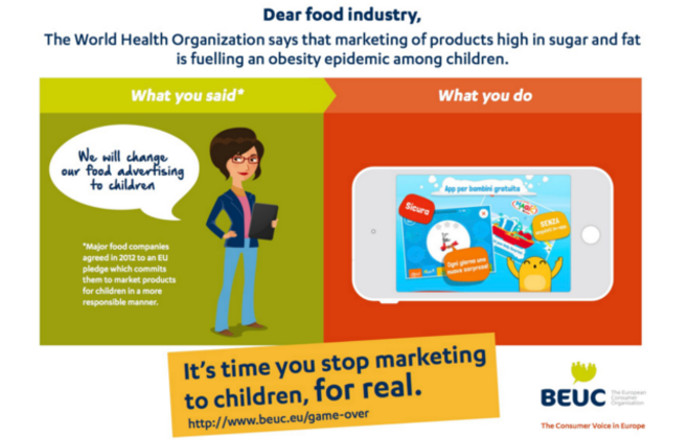Beyond the vacuous promises of self-regulation, Big Food uses cyberspace to bombard minors with social marketing to promote junk food. A Canadian study shows the dangers.
We have already reported the viral spread of misbehavioral patterns aimed at minors, on social media. Where both immoderate consumption and playful use and waste of so-called HFSS(High Fats, Sugars and Sodium) foods are promoted. With incessant and repeated reminders of their brands, in advertising and video content.
Children and adolescents are the victims of continuous bombardment, adding to television advertising to invade every entertainment channel via smartphones and tablets. Video sharing platforms such as YouTube, in particular, that entertain kids for hours on end, anywhere, anytime. (1)
The so-called.
challenge
, beyond the only apparent naivete, seem to be designed at the table to induce the purchase of junk food to be used either for games of ‘skill’ or for paroxysmal consumption contests or for uses other than food. Along the lines of experiments once attributed to the ‘little chemist.’
Big Food protagonist
It may be a coincidence, or maybe not, but the different channels refer precisely to certain food products. Carbonated drinks, sweets, chewing gum, precisely identified with the same brands. These are always industrial products and especially foods that are unnecessary, compared to the requirements stated in the healthy eating guidelines.
It is no wonder, therefore, that even in Italy-the home of the Mediterranean diet-one in four children does not consume even one serving of fruits and vegetables a day (of the recommended five). Nor if four out of ten frequently consume carbonated and sugary drinks. Overweight thus affects 21% of Italian children, obesity 10% (with a ten-year reduction in life expectancy). (2)
The University of Ottawa conducted research (3) on ‘marketing to children’ on behalf of the ‘Heart and Stroke Foundation of Canada’. Canadian children spend at least a couple of hours a day in front of the TV, up to eight in front of a video. Even there almost all of the foods advertised are ‘unhealthy,’ (4) and there are 25 million annual listings on only 10 websites.
The self-regulation proposed by
Big Food
is thus reconfirmed to be a mere cosmetic, greenwashing operation, completely unsuited to the goals of improving the health of our young people. It is imperative and urgent to ban all forms of promotion of nutritionally unbalanced foods. (5) As BEUC, (6), the European Confederation for Consumers, has been calling for years, (6) to date awaiting feedback.
Dario Dongo
Notes
(1) 35% of Italian children under 9 years old spend at least 2 hours a day in front of TV or video games or videos, according to Min. Sal. In the ‘Okkio alla salute‘ report
(2) 2014 data, Ministry of Health
(4) Foods that do not meet the nutritional profiles defined by the World Health Organization are considered ‘unhealthy’, https://www.greatitalianfoodtrade.it/profili-nutrizionali-loms-avanza-e-leuropa-retrocede/
(5) See footnote 4 above
(6) http://www.beuc.eu/game-over
Dario Dongo, lawyer and journalist, PhD in international food law, founder of WIISE (FARE - GIFT - Food Times) and Égalité.




